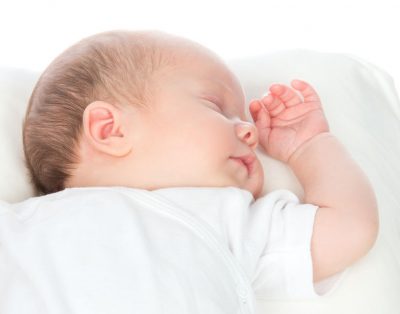A baby’s sleep environment plays a direct role in their safety, so much so that unsafe sleep positions and conditions are found to be the most common reasons in Sudden Infant Death Syndrome (SIDS) cases or infant asphyxiation cases.
The American Academy of Pediatrics (AAP) has developed ABC’s of safe sleep so parents like you can easily remember these steps and keep their little one snoozing safely: babies should always sleep Alone, on their Back, in a Crib or bassinet.
Even with the ABCs in mind, parents might wonder if certain sleep situations are considered “safe” or not. Here’s the most common safe sleep mistakes parents make and how you can avoid them:
1. Using blankets in the crib to keep baby warm
Why it’s unsafe: Blankets (and pillows) pose a suffocation risk. Blankets can end up covering baby’s face and obstructing their airways.
What to do instead: To keep your baby warm and cozy, consider using a swaddle or wearable blanket or sleep sack with PJs underneath. This will keep your baby comfortable, without having any loose bedding in the crib.
2. Bringing baby in your own bed to sleep (co-sleeping)
Why it’s unsafe: Adult beds pose a number of risks for babies: blankets and pillows could cause baby to suffocate or overheat, baby could roll and fall off the bed, parents could roll onto baby and injure them. According to the ABCs of safe sleep, the best way for baby to sleep is alone.
What to do instead: While bed-sharing is unsafe, room-sharing is encouraged! Your baby can sleep in a bassinet, crib, or pack-n-play right beside your bed. This can make those middle-of-the-night feedings a little easier and gives you peace of mind knowing baby is close by.
3. Putting baby to sleep on their stomach or side because it’s “more comfortable”
Why it’s unsafe: Babies’ muscles (especially newborns’) are not developed enough yet to allow them to move themselves out of a dangerous situation. If you put your baby to sleep on their side or stomach and their mouth and nose are covered or their breathing is restricted, they may not be strong enough to move so they can breathe.
What to do instead: Even if you think your baby might be comfortable in another position, always put your baby to sleep on their back. If your baby is strong enough to roll onto their side or stomach on their own, you can leave them in that position as long as the crib area is clear.
4. Buying plush crib bumpers and stuffed toys to comfort baby in the crib
Why it’s unsafe: Similar to blankets, crib bumpers and toys could cover your baby’s face and increase their risk of suffocation. Mesh crib bumpers are still a grey area, but it’s recommended to avoid bumpers altogether if you can.
What to do instead: Reserve your baby’s cuddly toys for play time and save your money by skipping out on bumpers. It’s tempting to buy all the cute crib accessories when you’re decorating the nursery, but they’re unnecessary and, more importantly, unsafe.
5. Sleeping in the car seat, swing, or bouncer
Why it’s unsafe: According to the AAP, letting baby sleep in a car seat, swing, or bouncer (anything with a bucket seat) for extended periods of time is a safety hazard because baby’s head can fall forward, cutting off their airway.
What to do instead: The safest place for your baby to sleep is always a firm, flat sleep surface. Keep car seat naps limited to car rides. If baby conks out in the car, there’s no need to panic, but transfer them to a flat sleeping surface as soon as possible—the same goes for bouncers and swings.
Your newborn will spend 15 to 18 hours sleeping every day. Although you will be close, not every minute of these hours will be under your watchful eye. You may have chores to complete or your own sleep to catch up on.
Following safe sleep guidelines and avoiding these common sleep mistakes will keep your baby sleeping peacefully and give you peace of mind.
Author Bio

